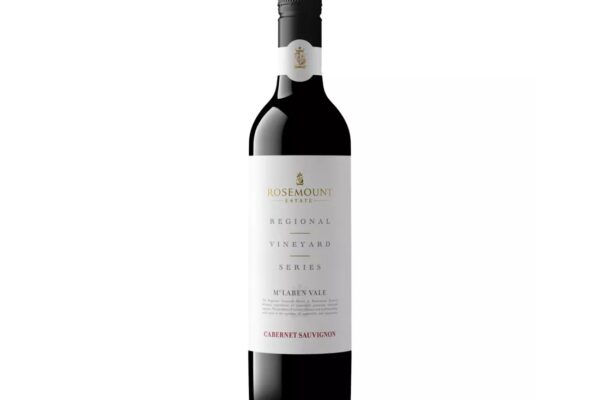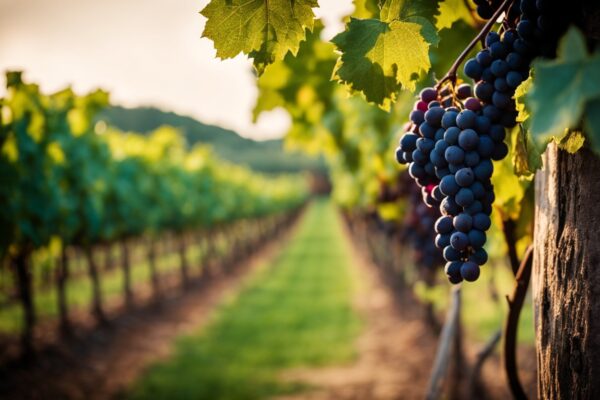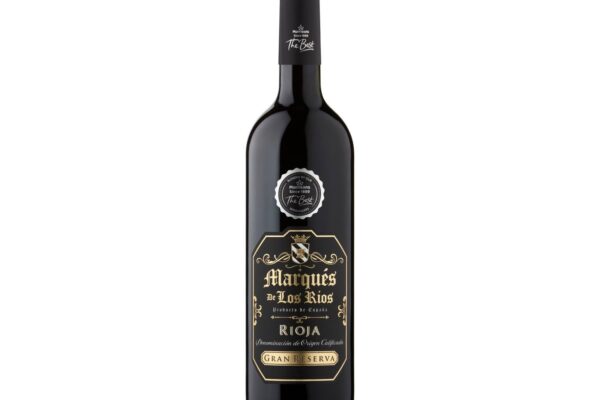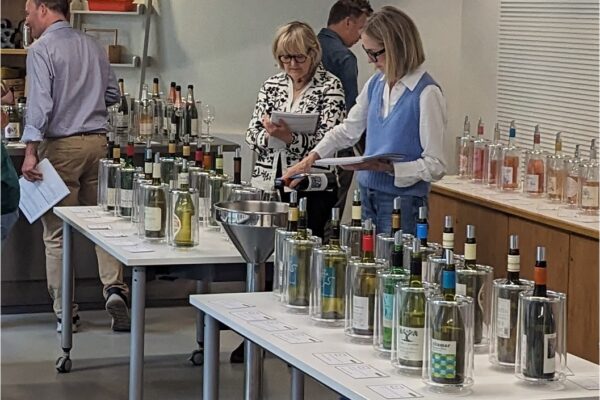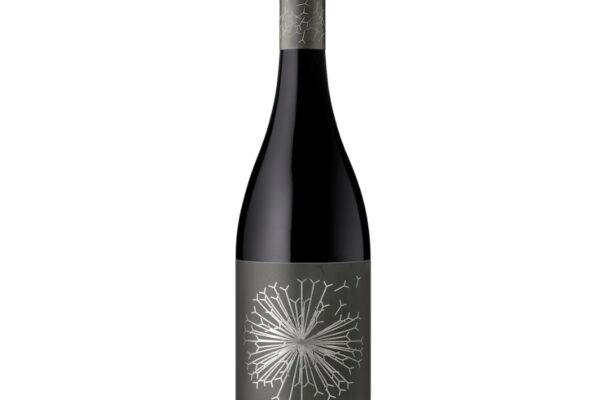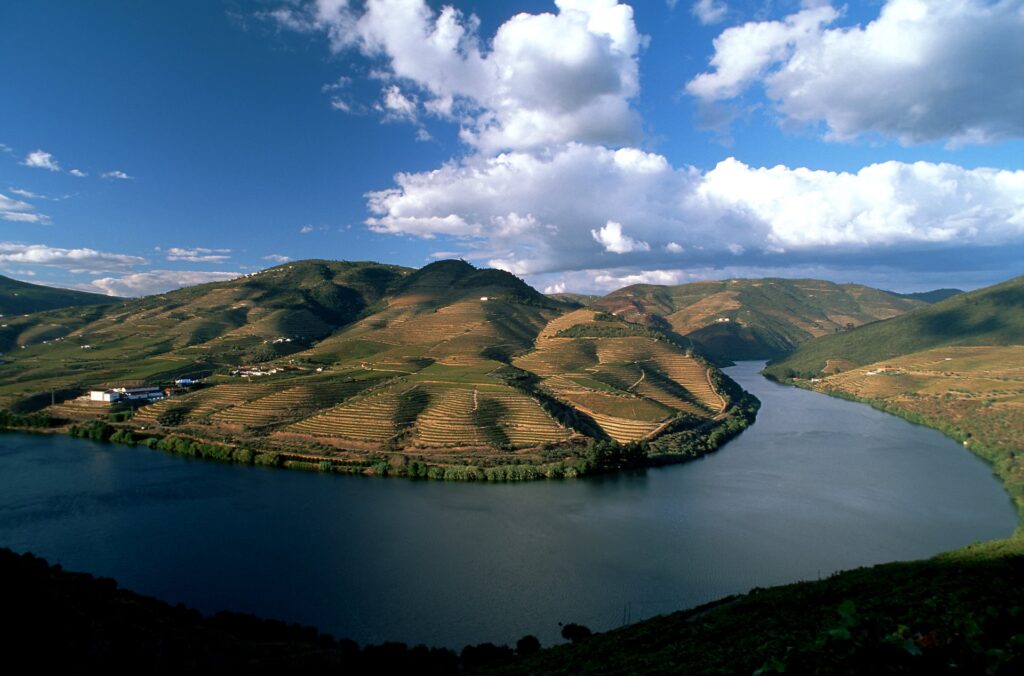
Portugal’s winemaking heritage is not only shaped by the country’s extensive range of climates and terroirs but also by the passionate commitment of its winemakers to both innovation and the preservation of centuries-old practices.
In 2020, Portugal solidified its position on the international wine stage as the 10th largest exporter by volume and 11th by value to the United Kingdom. The United Kingdom, along with 20 other markets, forms the core of Portugal’s strategic focus for wine promotion, highlighting the country’s proactive efforts in expanding its wine footprint globally.
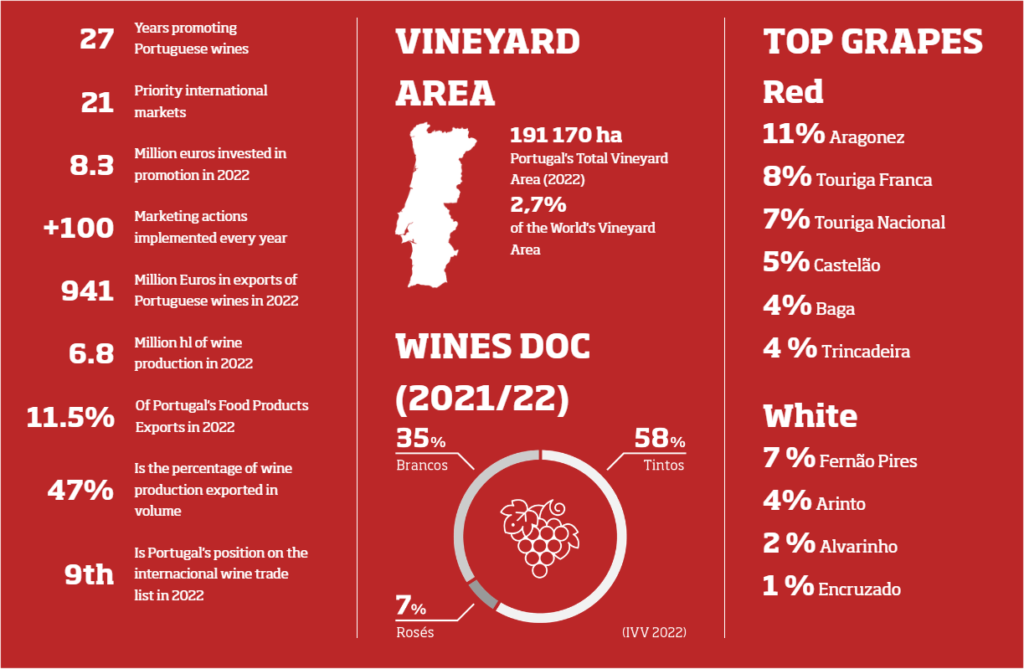
Portugal has 14 designated wine regions each offering a distinct viticultural and oenological identity. This diversity is a direct consequence of Portugal’s varied climatic conditions, which range from the cool, verdant north to the sun-drenched plains of the Alentejo. The country’s wine regions are a mosaic of microclimates and soil types, enabling the cultivation of over 250 native grape varieties. This genetic treasure trove includes such illustrious names as Touriga Nacional, Touriga Franca and Alvarinho, each contributing to the unique profiles of Portuguese wines.
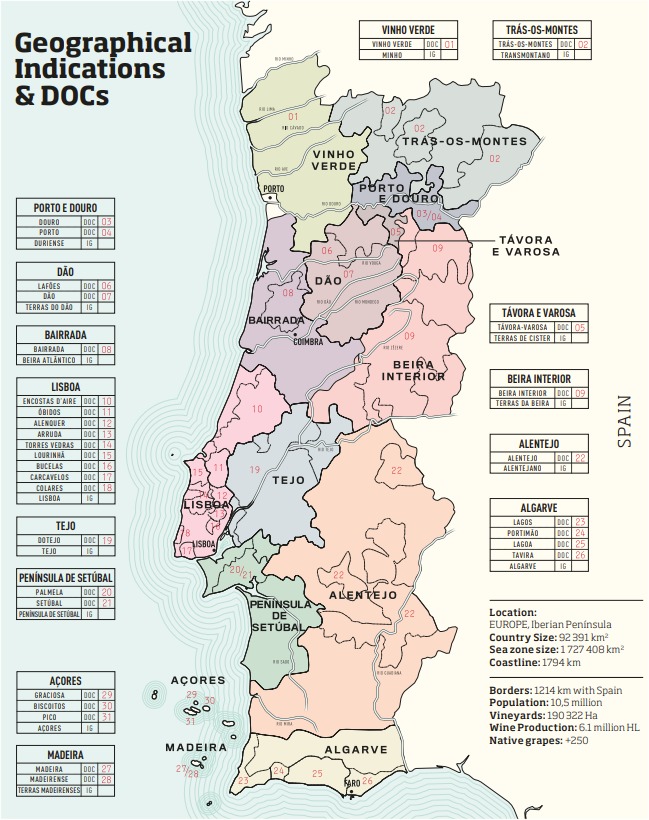
The regulatory framework governing Portuguese wines, with its roots stretching back to the mid-18th century designation of the Douro Wine region, underlines Portugal’s dedication to quality and authenticity. The system of DOC (Protected Designation of Origin) and IGP (Protected Geographical Indication) classifications ensures that wines not only adhere to rigorous standards but also faithfully express the unique characteristics of their terroir.
Portuguese wines offer a spectrum of styles and expressions. In the northwest, the Vinho Verde region produces light, refreshing whites characterised by their low alcohol content and vibrant acidity, often with a delightful fizz. Moving south, the terroirs of the Alentejo give rise to full-bodied whites that marry intensity and richness with the refreshing acidity provided by indigenous grape varieties, a hallmark of Portuguese wines.
The rosé wines of Portugal, while not confined to a single region, thrive in the cooler, maritime climates and higher altitudes, offering crisp acidity and a delicate body. These wines are celebrated for their versatility and are particularly popular in coastal settings.
The red wine spectrum in Portugal ranges from light-bodied, tangy wines produced along the wind-swept Atlantic coast to the rich, robust reds of the Alentejo and the structured, more tannic wines of the Douro Valley. These reds showcase the adaptability of Portuguese grape varieties to diverse environmental conditions, producing wines that range from easy-drinking to complex, age-worthy offerings.
Fortified wines are a cornerstone of Portugal’s identity, with Port and Madeira. Port wines, divided into White, Tawny, and Ruby categories, encapsulate a broad range of styles, from the oxidative nuttiness of Tawny to the vibrant fruitiness of Ruby ports. Madeira wines are celebrated for their unique aging process, which imparts a signature nutty, caramelised profile, ranging from dry to lusciously sweet expressions.
The Moscatel wines of Portugal, especially those from the Douro and Setúbal regions, offer another facet of the country’s fortified wine heritage. These wines, known for their sweetness and rich fruitiness when young, evolve into complex, nutty delights with age, making them perfect partners for a range of desserts or as a sophisticated conclusion to a meal.
Portuguese wines offer diversity, tradition and innovation through many regions regions, grape varieties and winemaking styles.






